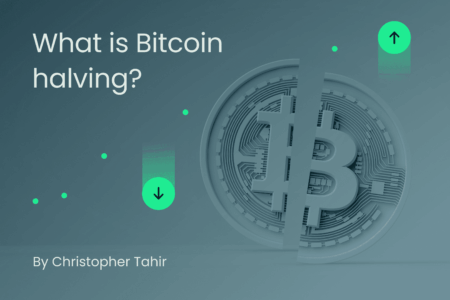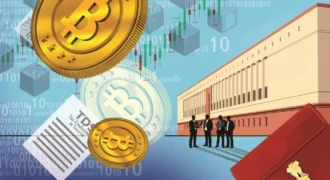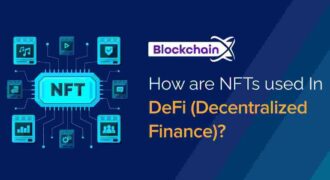Every four years, the Bitcoin community holds its collective breath for one of the most anticipated events in crypto — the Bitcoin Halving. It’s not just a technical milestone; it’s an economic shockwave that reshapes supply, influences market psychology, and often triggers long-term price cycles.
Now that the latest halving is behind us, investors, miners, and analysts are asking the same question: How will Bitcoin’s new supply dynamics affect price and demand in the months and years ahead?
What Is the Bitcoin Halving? A Quick Refresher
The Bitcoin Halving is a built-in feature of the network, designed by Satoshi Nakamoto to control inflation and ensure scarcity. Every 210,000 blocks — roughly every four years — the reward that miners receive for validating transactions is cut in half.
When Bitcoin first launched in 2009, miners earned 50 BTC per block. After successive halvings, that reward has dropped to 3.125 BTC per block as of the 2024 event.
This process will continue until around the year 2140, when the total supply reaches its ultimate cap of 21 million Bitcoin. The halving mechanism mirrors the diminishing rate at which gold enters the market, reinforcing Bitcoin’s reputation as “digital gold.”
The Economics of Scarcity: Supply Shock in Action
To understand Bitcoin’s post-halving price behavior, one must grasp a basic economic truth: when supply decreases and demand remains constant or increases, prices tend to rise.
Before each halving, the market anticipates the event — traders speculate, miners prepare, and narratives build. Afterward, the reduced supply of newly minted Bitcoin gradually filters into the market, creating a supply shock.
Historically, this scarcity-driven event has acted as a catalyst for bull markets:
- 2012 Halving: Price rose from ~$12 to over $1,000 in the following year.
- 2016 Halving: Bitcoin rallied from ~$650 to nearly $20,000 by 2017’s end.
- 2020 Halving: Bitcoin soared from ~$9,000 to an all-time high above $60,000 in 2021.
While past performance isn’t a guarantee, the consistent pattern suggests that halvings tighten supply, setting the stage for renewed upward momentum — especially as demand from institutions and retail investors expands.
Mining After the Halving: Pressure and Innovation
For miners, each halving event is both a challenge and an opportunity. Their rewards are cut in half overnight, meaning profitability depends heavily on Bitcoin’s market price and mining efficiency.
Post-halving periods often lead to:
- Smaller or inefficient miners exiting the market, as operational costs outweigh rewards.
- Consolidation among large mining firms, who benefit from economies of scale and cheaper electricity.
- Investment in innovation, including renewable energy sources, advanced ASIC machines, and optimized cooling systems.
Interestingly, this miner shakeout helps strengthen the network. Less efficient participants drop off, while the remaining miners operate more effectively — enhancing Bitcoin’s long-term sustainability and resilience.
Institutional Demand: The New Force in Bitcoin’s Supply Equation
One major difference between earlier halvings and today’s environment is the rise of institutional demand. From publicly traded companies like MicroStrategy and Tesla to financial giants offering Bitcoin ETFs, institutional players now hold a significant stake in Bitcoin’s supply-and-demand dynamics.
Each halving amplifies the scarcity effect. When you combine a reduced flow of new coins with growing institutional accumulation, it creates a perfect storm for long-term price appreciation.
According to recent estimates, Bitcoin ETFs and corporate holdings account for over 4% of total supply, meaning fewer coins are available for trading. As demand from these large-scale investors increases post-halving, the liquidity crunch intensifies — fueling upward pressure on prices.
Market Sentiment: The Psychology of Scarcity
Beyond economics, the Bitcoin halving has a profound psychological impact on the market. Investors are drawn to the narrative of scarcity — a story that resonates deeply in an age of fiat currency inflation and economic uncertainty.
The phrase “only 21 million Bitcoin will ever exist” has become a rallying cry for long-term holders. Each halving reinforces this truth, reminding investors that Bitcoin’s supply is predictable, finite, and transparent — unlike central bank monetary policies.
Post-halving, bullish sentiment often builds gradually, fueled by narratives of limited supply and the “digital gold” thesis. This combination of logic and belief drives both speculation and genuine conviction — a rare blend that keeps Bitcoin’s market uniquely resilient.
The Supply Squeeze: Long-Term Holders Dominate
One of the defining features of Bitcoin’s post-halving behavior is the rise in long-term holding (HODLing). Data consistently shows that as block rewards shrink, more investors choose to hold rather than sell.
According to on-chain analytics, a significant percentage of Bitcoin’s circulating supply hasn’t moved in over a year — a sign of increasing investor confidence and reduced market liquidity.
As more coins remain locked in cold wallets and institutional treasuries, the available supply on exchanges diminishes. The result? A tighter market, stronger floor prices, and more volatile upside potential when new waves of demand arrive.
External Influences: Macroeconomics and Regulation
While Bitcoin’s internal mechanics are deterministic, its price doesn’t operate in isolation. Post-halving effects interact with broader economic conditions — interest rates, inflation data, and global liquidity all play crucial roles.
For instance, during the 2020–2021 bull run, ultra-loose monetary policies and stimulus spending amplified post-halving gains. Conversely, tightening cycles and regulatory crackdowns can temporarily mute bullish momentum.
The key insight? Halving sets the structural foundation for scarcity, but macro factors determine how quickly and intensely that scarcity translates into price movement.
Short-Term Volatility, Long-Term Value
It’s tempting to assume that prices will skyrocket immediately after a halving, but history tells a more nuanced story. The real effects usually unfold over 6 to 18 months post-event.
In the short term, Bitcoin often experiences volatility and consolidation as markets adjust to new mining economics and speculative narratives. However, as new supply continues to diminish and demand builds, the long-term trajectory tends to favor the upside.
In essence, halvings are slow burns, not fireworks — their impact compounds quietly over time.
Looking Ahead: Bitcoin’s Future in a Post-Halving World
As we move deeper into the post-halving era, Bitcoin stands at the intersection of scarcity and global demand. Each cycle reinforces its role not only as a speculative asset but also as a macro-economic hedge and digital store of value.
With increasing adoption, institutional participation, and technological innovation, Bitcoin’s supply mechanics continue to differentiate it from every other financial asset on earth.
We’re witnessing a system where predictable scarcity meets unpredictable human demand — and history shows that’s a recipe for exponential growth.
Final Thoughts: The Power of Programmed Economics
The genius of Bitcoin lies in its code. While fiat systems rely on central authorities to manage money supply, Bitcoin’s monetary policy runs on mathematics and consensus. The halving is not a marketing event — it’s an algorithmic expression of sound money principles.
Every halving reminds us that Bitcoin is not just another investment — it’s a statement about the future of value, scarcity, and independence.
As the supply tightens and the world watches, one thing remains clear:
The more Bitcoin’s supply shrinks, the louder its value speaks.










